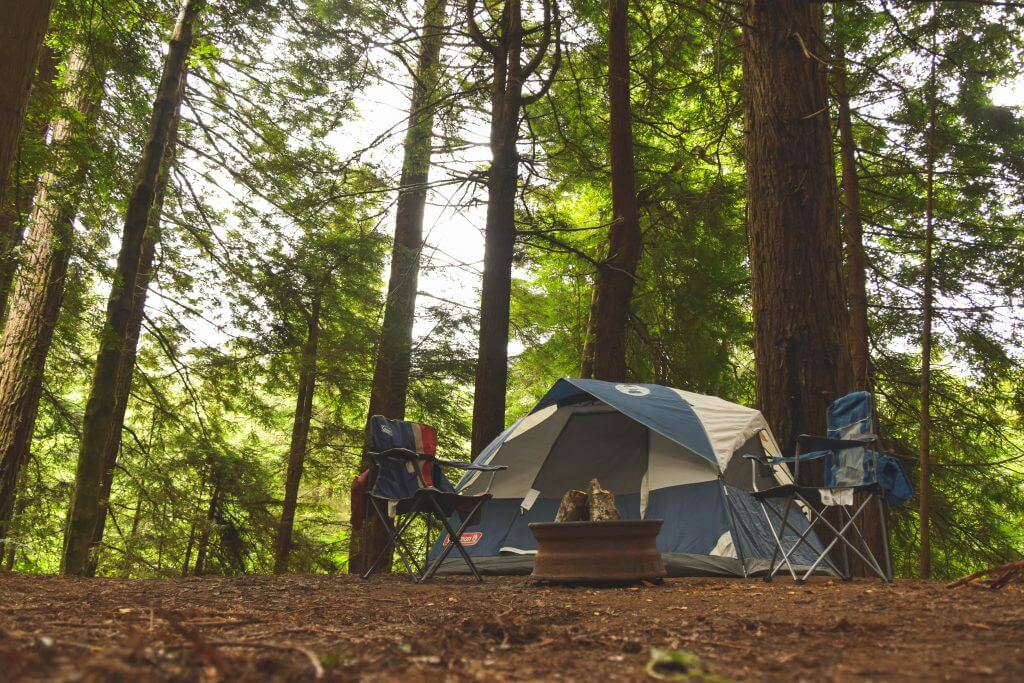
Camping can be great fun and an affordable way to take a break, providing you have the right equipment. When choosing a camping tent, think about how you will be using the shelter and how many people will do so. By breaking down the tent in terms of individual factors like weight, material, and size, you will then be able to narrow in on the best camping tent for you.
Here are the essential things to know about camping tents and which factors should influence your decision regarding the best camping tent for you.
Tent Weight
Consider whether you are going to be carrying your tent as a backpacker, balancing it on a bike, or strapping your tent to your car. This will determine how heavy your backpack should be. Larger, more comfortable tents weigh more. If you must carry a tent, think about buying something that is under four pounds.
Note that most camping tents will describe their minimum and maximum weights. Maximum includes all the guy lines, stakes, and other materials required to construct the tent.
When You’ll Use Your Tent
Knowing the time of year you will use the tent will guide you as to how weather-resistant your tent needs to be. Tents are often categorized as three-season tents of four-season tents. The season that makes all the difference is winter.
A three-season tent should stand up to wet weather, but they are also more likely to have mesh panels for airflow. Their job is really to provide privacy and shelter from rain.
A four-season tent, on the other hand, will be designed to withstand strong winds, heavy rain, and snow. You can expect them to have more poles and fewer mesh panels. If you plan to camp during winter, you may require that heavier, more durable, and potentially more expensive four-season tent.
Size Matters
Be realistic about how comfortable you would like to be. A bigger tent might make your camping experience much more enjoyable.
Floor size is typically measured in square feet. As a rule of thumb, look for 20 square feet or more per person. You can go lower, but be aware that it could be very snug. And you may need (or want) space to store your items, as well as a sleeping bag or camp bed.
A comfortable tent will allow you to sit up (a height of about 3 feet and six inches). Check out the stated peak height and deduct 2 or 3 inches to get a more accurate interior height measurement.
You can take comfort to the next level with a cabin- or dome-style tent. The walls of cabin-style tents are almost vertical, making them more homely. These tents may even be divided into rooms. And they may feature various doors for different people.
A dome-style tent should be effective for dealing with strong winds. They offer generous living space within, but – because of the shape of the walls – they don’t provide as much space as cabin-style tents.
Walls, Vents, and the Rainfly Option
A double wall tent is likely to feature a main section and a rain-fly, without which the wall is more likely to experience more condensation. To avoid damp conditions, choose a tent that has execllent ventilation or go with a double wall tent. Vents and mesh can enhance the experience of owning a tent because they promote air flow.
When considering the walls of your tent, think about their thickness, measured in denier. The higher the denier, the more robust it will be.
A rainfly is a waterproof cover that you can attach to the tent’s roof for extra protection from wet conditions and/or for insulation against colder weather. The rainfly will either cover the roof only, preserving light and views, or it will cover the entire tent.
Freestanding Tents
Not all tents require pegs and hammers. Most family-oriented tents are freestanding. They do away with traditional tent poles in favor of a few aluminium poles, which are lighter and more durable than fiberglass.
You can set up a freestanding camping tent on a variety of surfaces, giving you flexibility. You can also move it easily, because there is no need to uproot tent pegs, you can set it up or take it down quickly, and it’s straightforward to shake and clean the inside before storage.
Tent Floor/Footprint
The floor of a tent is arguably the hardest-working area. Building your tent on a sheet of plastic or nylon can protect the floor and increase the tent’s life by reducing wear and tear on the floor. Consider whether your tent comes with a custom-fitted groundcloth – also known as a footprint – or whether you will need to get something separately. If you buy a separate groundcloth, note that any areas that stick out of the tent are likely to channel any rainwater underneath the tent where it may then seep through the floor’s fabric.
Camping tents range from around $60 to hundreds of dollars. Whatever your budget and whatever your needs, you can find some excellent deals on camping tents here. With our camping tent tips, you should now be able to identify what you need to get the best camping tent for you.
Share this:




